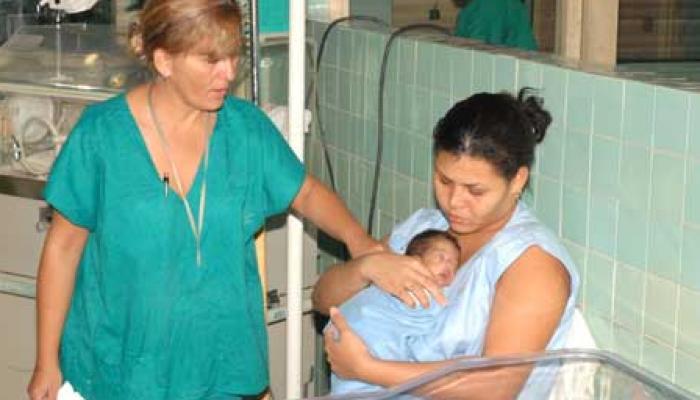A Cuban physician, doctor Reynol Juara, regards as a true “miracle” the survival of his newborn son who almost died during childbirth. Juara described as excellent the attention given to the young patient and his mother at a Matanzas province hospital.
That medical institution provides, as do all throughout the country, a very careful attention to patients, following guidelines from the Cuban Government.
Material support, plus the skill and effort of the medical staff: doctors, nurses, technicians and other personnel, allowed the Cuban nation to equal in 2014, the lowest infant mortality rate in its history: only 4.2 per 1000 born alive, achieved the year before.
This health indicator, comparable to that in highly developed nations, is the result of the nationwide effort to improve public health and reduce infant and other mortality rates.
This demanded providing special attention to pregnant mothers at risk and to low-weight newborns, as well as the detection of conditions provoking congenital birth defects and genetic disturbances.
Pre-school death rates lowered again in 2014 and mortality fell from 4.1 to 3.8 per 1,000 live births, in children in the 1-4 years of age group.
This successful outcome is the result of strict national programmes of support to basic services, such as health and education, both of them fully free of charge.
These successes have been achieved under adverse material circumstances, such as the US blockade, the global financial crisis and domestic insufficiencies.
The Cuban State spends 53 percent of its budget on health and education, including investments aimed at improving the material conditions at 150 hospitals and clinics.
The Cuban State also supports the activities of 400 polyclinics, 11,000 community doctors’ offices in the neighborhoods, and 100 clinics for expectant mothers at risk.
All this in addition to the Mother and Infant programme and that of the Family Doctor and Nurse offices throughout the country.
To understand the huge strength of the Cuban Public Health System it must be recalled that it enjoys an enormous human capital, expressed in the highest ratio in the world of doctors per inhabitants: 7.2 physicians for each 1000 Cubans, plus 25,000 others serving in sixty nations in the world.
They include those doctors sent to Sierra Leone, Liberia and Guinea to check the advance of the Ebola epidemic in answer to an appeal issued by the United Nations and the World Health Organization.
International organizations and world leaders have termed as extraordinary the job being done by Cuba in providing medical assistance to several endangered nations and in training medical personnel from many other countries.
While some of the world powers assign billions for the arms race, Cuba dedicates its resources to the promotion of social services both domestically and in other nations.


